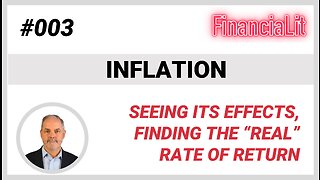Inflation Goes Wild - The NEW FANG is now - Fuel, Agriculture, Natural Resources and Gold!
The new FANG is going to be fuel, agriculture, natural resources and gold.
Inflation is roaring, foods are in short supply and prices high when they are in stock.
Now we have a serious case of Avian Bird Flu. The U.S. poultry industry steps up biosecurity defenses as cases identified in commercial and wild flocks. The USDA reported an outbreak of highly pathogenic avian influenza in a flock of about 240,000 birds at a commercial chicken farm in Fulton County, Ky. Tyson Foods Inc., the largest U.S. chicken processor by sales. Remember in 2015, 50 million chickens and turkeys were affected. This lead to turkey and chicken prices increasing by 60+% in 2015.
The 10 YR Treasury hit 2.37% highest since since 2019 ---- Add a hawkish Jay Powell to rampant inflation
There’s Only One Stock-Market Sector in the Green This Year
Energy stocks are leading the pack in the stock market in 2022. The IEA International Energy Agency introduced a 10 point plan to cut oil use. Including darn Stupid Ideas like #4 Car-Free Sundays in cities - What a Sunday bunch with Neo Woke Cupcakes heading the menu choices.
Russia’s invasion of Ukraine has sent crude-oil prices on a tear—and energy stocks along for the ride—as investors monitor looming supply threats and rapidly evolving geopolitical tensions. Gasoline prices, meanwhile, have risen to record levels, punishing consumers at the pump and lifting already high inflation.
Energy is the only sector in the S&P 500 in the green for 2022, up 37%. The benchmark itself is down 6.4% with investors worried about the pace of the Federal Reserve’s plan to increase interest rates to curb inflation.
Of the 25 best-performing stocks in the index this year, 18 sit in the energy sector. Occidental Petroleum Corp. OXY -0.53% has more than doubled, Halliburton Co. HAL -0.69% has surged 64% and Chevron Corp. CVX -0.21% is up 40%.
The gains in the stocks track the climb in oil prices. Brent crude, the international benchmark, has risen 49% this year to $115.62 a barrel and briefly eclipsed $130 earlier this month. U.S. crude is at $112.12.
The rally has also coincided with a decline in the big technology shares that powered the market higher for much of the past decade. Investors have sold shares of tech and other growth companies with lofty valuations, concerned about how they will fare in a rising-rate environment. The S&P 500’s tech sector is down 11% this year.
“The new FANG is going to be fuel, agriculture, natural resources and gold,” said Nick Giacoumakis, president and founder of NEIRG Wealth Management, referring to the popular acronym for Facebook, Amazon.com Inc. , Netflix Inc. and Google.
The ripple effects from higher energy prices and concerns about potential shortages have lifted prices for many commodities to records. Wheat prices recently hit new highs, as did prices for metals such as palladium, nickel, aluminum and copper.
To be sure, the energy sector’s influence on the broader stock market is limited, even after the recent rally. The group’s weighting in the S&P 500 is 3.8%, down from more than 15% at its peak in 2008 before demand for oil and gas started diminishing and technology emerged as the economy’s dominant industry.
Excess drilling by shale producers and sliding energy prices prompted many investors to trim their positions in energy stocks years ago. A wave of climate-conscious investing further added to the pain. Money managers shunned fossil-fuel producers, while adding green-energy companies to their portfolios. The Covid-19 pandemic delivered another blow when demand for energy evaporated during the shutdown.
The tide began to turn last year as the economy recovered and oil producers kept supply in check. Energy was the best-performing sector in the S&P 500 last year after lagging behind the index in eight of 10 years through 2021.
Excess drilling by shale producers and sliding energy prices prompted many investors to trim their positions in energy stocks years ago. A wave of climate-conscious investing further added to the pain. Money managers shunned fossil-fuel producers, while adding green-energy companies to their portfolios.
Exxon Mobil Corp., for one, unveiled plans in October to resume buybacks after a five-year hiatus, authorizing a $10 billion share repurchase. Exxon shares have climbed 34% so far this year.
“Quite honestly unless somebody can predict how the future is going to play out—in terms of Russia and Ukraine, or we’re looking toward some kind of resolution in the near future—I can’t say I expect commodities to stop climbing,”
-
 14:06
14:06
TradingFraternityRumble
2 years ago $0.05 earnedInflation Is About To SKYROCKET
26 -
 17:27
17:27
MarkYegge
3 years agoINFLATION - Is it coming back?
68 -
 0:51
0:51
Matt Kohrs
11 months agoInflation Is Doing What?!
1.45K1 -
 3:11
3:11
MyFirstNestEgg
1 year agoI is for Inflation!
2 -
 1:55
1:55
RightHereRadio
1 year agoInflation 101
91 -
 0:30
0:30
Sinofmen
1 year agoInflation For All
2 -
 26:41
26:41
Worldview Financial TV
5 months agoInflation Up. Now What?
4 -
 26:56
26:56
WorldviewTube
5 months agoInflation Up. Now What?
181 -
 7:30
7:30
RumEvery
1 year agoInflation 101
9 -
 10:37
10:37
FinanciaLit, the book and the channel
7 months ago003 - Inflation
19